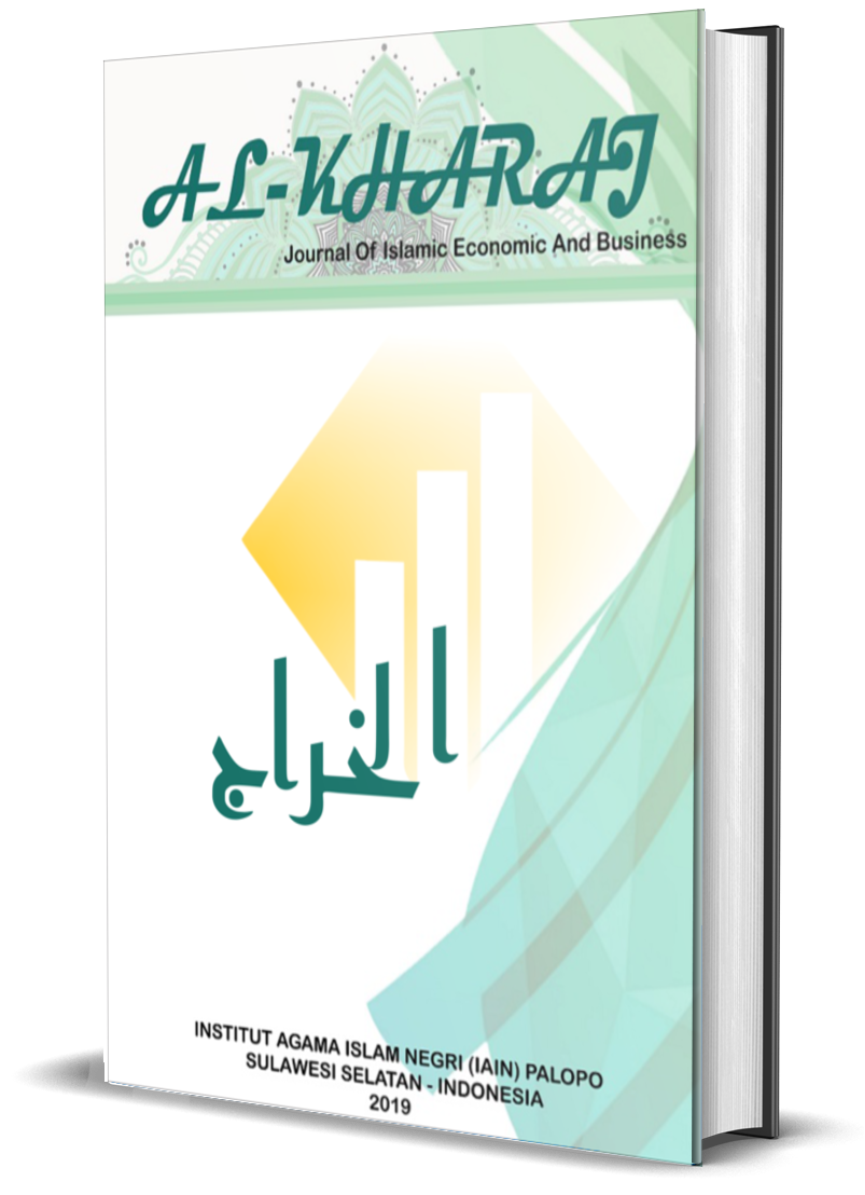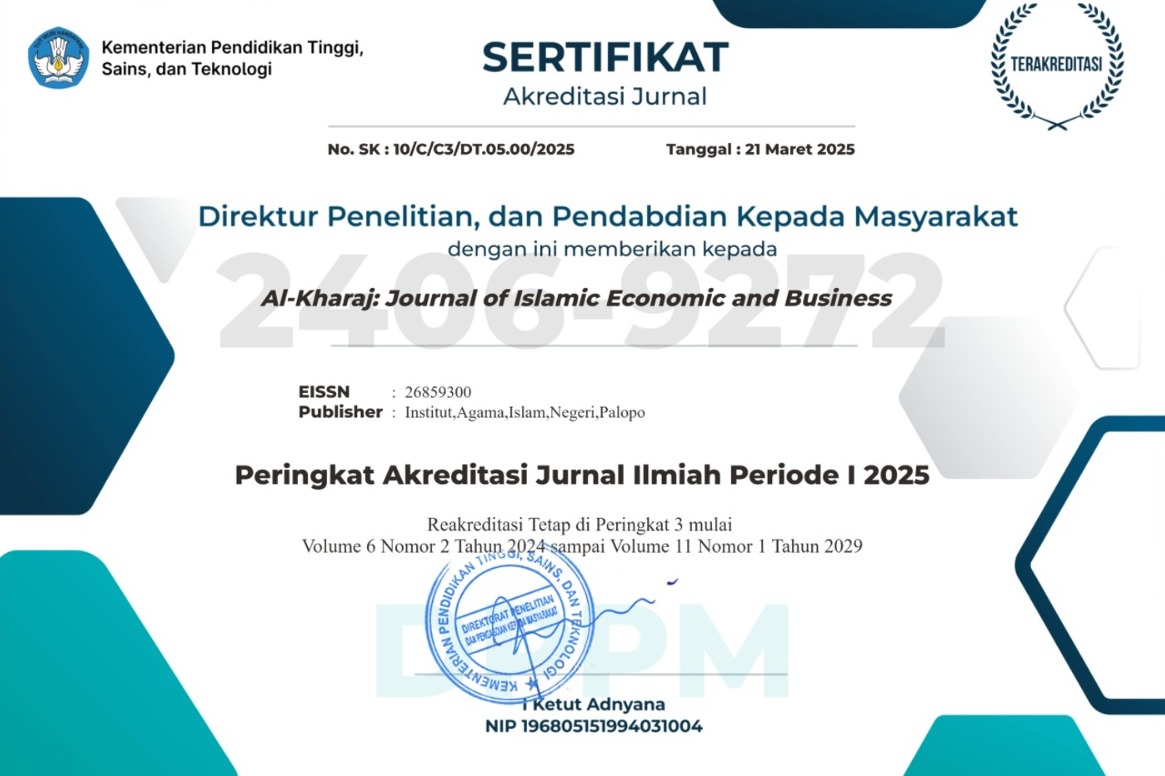Development of the Fisheries Economic Sector in the Sula Islands Regency
DOI:
https://doi.org/10.24256/kharaj.v7i4.8265Keywords:
Capture Fisheries, Economic Sector, Sula IslandsAbstract
This study aims to analyze the potential, competitive advantages, development prospects, and specialization of commodities in the capture fisheries sub-sector in the Sula Islands Regency. Method: This study uses a descriptive quantitative method by analyzing secondary data from the Sula Islands Regency and North Maluku Province Statistics Agency, as well as primary data obtained through interviews. The data analyzed covers the period 2018-2023. The analyses used include LQ, DLQ, Combined LQ and DLQ Analysis, IS, Shift-Share, and Klassen Typology. The results of the analysis show that skipjack tuna, tuna, and other fish are base commodities, meaning they are able to serve local needs and be exported outside the region. However, from a future prospects perspective (DLQ), only other fish are classified as potential commodities, while skipjack tuna and tuna are categorized as unpromising, indicating a slowdown in comparative growth rates.The combined analysis of LQ and DLQ places Other Fish in Type I (Basic, Prospective), while Skipjack and Tuna are in Type III (Basic, Not Prospective). In terms of specialization, only Other Fish and Skipjack have a high level of specialization for development. Shift-Share analysis shows that Skipjack, Tongkol, and Other Fish have competitiveness (positive Differential Shift), but Skipjack and Tuna experience slow proportional growth (negative Proportional Shift). Klassen's typology classifies Skipjack, Tongkol, and Tuna as Advanced and Fast-Growing Sectors (high contribution and high comparative growth), while Other Fish is classified as a Fast-Developing Sector (low contribution but high comparative growth
References
Amin,Chairullah. 2012. Ekonomi Gamalama. Kemandirian Fiskal, Sektor Unggulan dan Daya Saing Wilayah. LepKhair. Ternate.
Abdullah, Piter, Armida S, Alisjahbana, effendi N & Beoodiono. 2002. Daya Saing Daerah Konsep Dan Pengukurannya Di Indonesia. BPFE. Yogyakarta.
Arsyad, Lincon. 1999. Pengantar Perencanaan Pembangunan Ekonomi Daerah,edisi kedua. BPFE. Yogyakarta.
Adjisasmita, S, A. Transportasi Dan Pengembangan Wilayah. GRAHA ILMU. Yogyakarta.
Angelia, Yuki. 2010. Analisis Ketimpangan Pembangunan Wilayah Di Provinsi Dki Jakarta Tahun 1995-2008 . Fakultas ekonomi Universitas Diponegoro Semarang. Semarang.
Adiisasmita, Rahardjo. 2005. Dasar-Dasar Ekonomi Wilayah. Graha Ilmu. Yogyakarta.
Agus, Andi. 2018. “Pengelolaan Dan Penggunaan Sumberdaya Kelautan / Perikanan ( Studi Kasus Kota Ternate , Maluku Utara ) Marine / Fisheries Resource Using ( Case Study Ternate Manucipality , North Molucca ).” JFMarSci 1 (June): 93–102.
BPS Kabupaten Kepulauan Sula. 2023. Hasil Pencacahan Lengkap Sensus Pertanian 2023. Edited by BPS Kabupaten Kepulauan Sula. BPS Kabupaten Kepulauan Sula. BPS Kabupa. Sanana: BPS Kabupaten Kepulauan Sula.
BPS Kabupaten Kepulauan Sula. 2024. Kabupaten Kepulauan Sula Dalam Angka 2024. BPS kabupa. Sanana: BPS Kabupaten Kepulauan Sula.
BPS Maluku Utara. 2023. Hasil Pencacahan Lengkap Sensus Pertanian 2023. BPS Maluku Utara. Ternate.
Daryanto. 2004. Keunggulan Daya Saing dan Teknik Identifikasi Komoditas Unggulan: Dalam Mengembangkan Potensi Ekonomi Regional. Agrimedia, 9 (2): 51-62. http://www.search-document.com/pdf/1/1/Daryanto-2004-Keunggulan-Daya-Saing-dan-Teknik-Identifikasi-Komoditas-Unggula.html.
Faisyal, Rani, and Cahyasari Wulandari. 2015. “Motivasi Indonesia Dalam Menerapkan Model Kebijakan Blue Economy Masa Pemerintahan Joko Widodo.” Jurnal Transnasional 7 (1): 1914–28. https://transnasional.ejournal.unri.ac.id/index.php/JTS/article/view/3189%0Ahttps://transnasional.ejournal.unri.ac.id/index.php/JTS/article/download/3189/3105.
Sjafrizal. 2008. Ekonomi Regional Teori Dan Aplikasi. Baduose Media. Padang.
Setiono,NS. Dedi. 2011. Ekonomi Pengembangan wilayah: Teori dan Analisis. Fakultas ekonomi Universitas Indonesia. Jakarta.
Samiun,M,M. 2008. Analisis Perekonomian Provinsi Maluku Utara: Pendekatan Multisektoral. Institut Pertanian Bogor. Bogor.
Subandi, M.M. 2008. Ekonomi Pembangunan. ALFABETA. Bandung.
Tarigan, Robinson. 2005. Ekonomi Regional Teori Dan Aplikasi. Bumi Aksara.Jakarta.
Mudiastuti, Retnari Dian, and Taufik Nur. 2014. “Strategi Kebijakan Industri Marine Politan Untuk Mendukung Konsep Maminasata: Model Koseptual Dengan Pedekatan Sistem Dinamik.” Jemis 2 (2): 20–27.
Muta'ali,lutfi.2015. Teknik Analisis Regional unutk perencanaan wilayah,tata ruang dan lingkungan. BPFG.Yogyakarta.
Mawardi, Ikhwanuddin. 2007. Perencanaan Pembangunan Wilayah Berdasarkan Konsep Produktifitas Unggulan. J. Tek.Ling. 8 (2) : 181-182. http://www.search-document.com/pdf/1/1/Mawardi
Peraturan Mentri Perikanan RI. 2018. “Peraturan Mentri Kelautan Dan Perikanan Nomor PER.15/MEN/2010 Tentang Organisasi Dan Tata Kerja Kementrian Perikanan.” Kementerian Kelautaran Dan Perikanan RI. Jakarta: Kementerian Perikanan dan Kelautan RI.
Peraturan Republik Indonesai. 2009. “Undang-Undang Republik Indonesia Nomor 45 Tahun 2009 Tentang Perubahan Atas Undang-Undang Nomor Nomor 13 Tahun 2004.” Peraturan Republik Indonesai. Jakarta: Repbulik Indonesia.
Windhani, Puput Ayu Pudyastuti Herman Samdodo Kikin. 2018. “Analisis Daya Saing Ekspor Komodiri Udang Indonesia Di Pasar Eropa Tahun 2008-2016.” Journal Proceeding 8 (1): 1–12.
Widodo,Tri. 2006. Perencanaan Pembangunan: Aplikasi Komputer Era Otonomi Daerah. UPP STIM YKPN. Yogyakarta
Downloads
Published
How to Cite
Issue
Section
Citation Check
License
Copyright (c) 2025 musdar muhammad, Bahrun Talib, Muhdar Muba

This work is licensed under a Creative Commons Attribution-ShareAlike 4.0 International License.
Authors retain copyright and grant the journal right of first publication with the work simultaneously licensed under a Creative Commons Attribution-ShareAlike 4.0 International License. In line with the license, authors are allowed to share and adapt the material. In addition, the material must be given appropriate credit, provided with a link to the license, and indicated if changes were made. If authors remix, transform or build upon the material, authors must distribute their contributions under the same license as the original.









